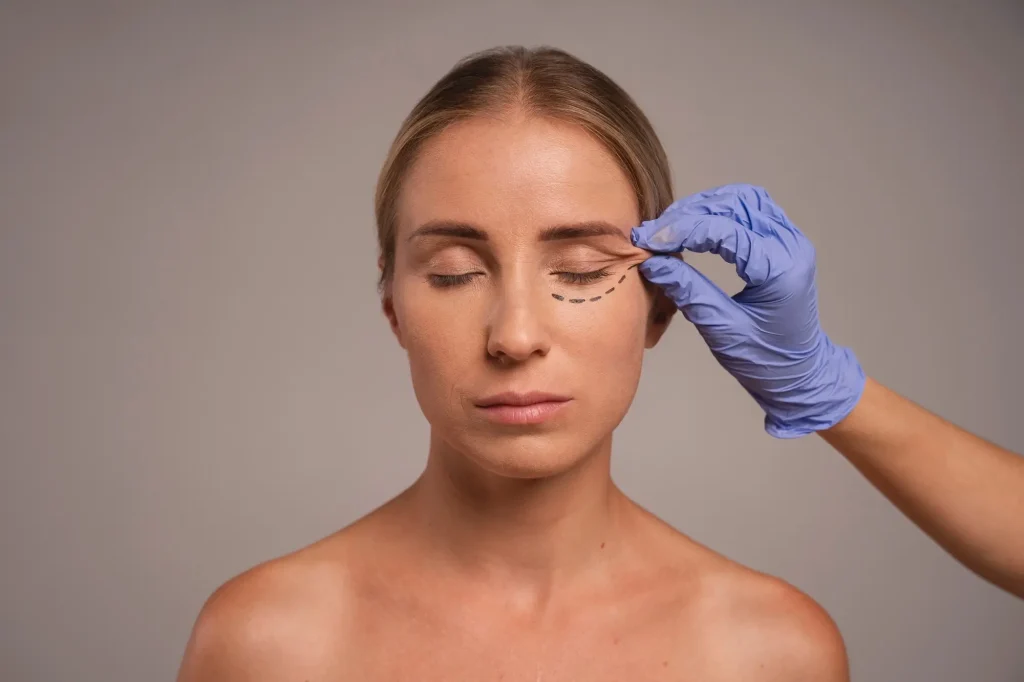A thread lift is a minimally-invasive procedure for facial rejuvenation which involves the use of barbed sutures placed under the skin of neck and face. This procedure has gained popularity due to a shorter operation time, recovery period, and fewer postoperative complications than traditional facelift techniques. The supposed lack of adverse effects in contrast to traditional facelifts is favored by some patients, despite a modest degree of improvement.
Who are the best candidates for a thread Lift procedure?
A thread lift is a popular recommendation by specialists to patients who are looking for a less invasive alternative for the purpose of reducing sagging skin around the cheek, jawline, and neck. Those not keen of going “under the knife” may benefit from this form of treatment, which could improve their appearance through slighter soft-tissue manipulation. Often considered and labelled a “lunchtime” procedure, a typical operation varies in duration, sometimes lasting 12 hours.
Because the knots of the threads are hidden within the skin itself, thus some doctors claim that scarring will not be visible. Older patients with excessively loose skin and facial sagging will more likely benefit from a facelift surgery.
Who can perform the procedure?
Despite being less invasive than traditional facelift surgery, the procedure must be done by a qualified plastic surgeon with thread lifting experience. You should always be wary of practitioners who are unable to recommend other surgical or non-surgical options. Your doctor should be aware of all thread lift procedures currently available, and must be able to determine if combination or surgical treatments are best suited to each patient.
Types of threads
The types of sutures used in thread lifting can be divided in 3 main categories:
A. Mode of absorption
- Absorbable threads Polydioxanone (PDO) thread, Silhouette Soft thread, and fine thread with bi-directional absorbable cone.
- Non-absorbable threads APTOS thread, Silhouette Lift thread, and Woffles thread (Polypropylene).
B. Quality of thread
- Barbed Can be bidirectional, unidirectional, or cogged.
- Non-barbed or smooth Can be monofilament plain or monofilament spiral.
C. Length of thread
- Short Any thread shorter than 90mm.
- Long Any thread longer than 90mm.
The outcome
In 1 study, authors recommend their own “combined-type thread lift,” involving a combination of floating-type and fixed-type, as a better modification from the former thread lift technique. The authors reported satisfactory results from 28 patients treated. In 2014, a study conducted over a 2-year period reported satisfactory results from majority of the patients (89%) treated using a synthetic, monofilament suspension thread.
Recovery and side effects
The treated areas might appear slightly raised after the procedure. None of the patients from the aforementioned study asked for the removal of threads immediately after the thread lift procedure. The most common minor adverse events noted are listed below.
- Redness
- Swelling
- Ecchymosis
- Small hemorrhage
- Loss of sensation (transient)
Thread Lift Alternatives
Not everyone with lines, wrinkles, and sagging skin are good candidates for thread lifting. As such, the practitioner must have sound judgement in assessing the patient’s defects. There are other minimally invasive procedures available that can provide the sameor even betterimprovement. Popular soft-tissue augmenting materials include botulinum neurotoxin (Botox), and cosmetic dermal fillers. Temporary fillers, like hyaluronic acid-based implants, are currently the most widely used facial filler. The ever-increasing demand for a non-surgical way of reversing the signs of ageing drove dermal filler devices like Radiesse, to become one of the top minimally invasive procedures in the beauty industry. However, for moderate to severe sagging of the face and neck area, standard facelift surgery is still the gold standard.



















